| Columns Retired Columns & Blogs |
Usher Audio Technology S-520 loudspeaker Measurements
Sidebar 3: Measurements
I estimated the Usher S-520's voltage sensitivity to be 84.5dB(B)/2.83V/m, which is both a little lower than specified and on the low side. Its impedance, however, remains above 6 ohms for almost the entire audioband, with a minimum value of 5.3 ohms at 244Hz (fig.1), meaning that it will be a relatively easy load for an amplifier to drive. The traces in fig.1 have a couple of discontinuities evident between 400Hz and 600Hz. Investigating the cabinet walls' vibrational behavior with an accelerometer revealed a reasonably strong resonant mode at 460Hz on all the six surfaces (fig.2 is a cumulative spectral-decay plot calculated from the accelerometer's output when it was fastened to the center of the rear panel). This mode may well be high enough in frequency to have no subjective consequences, however.
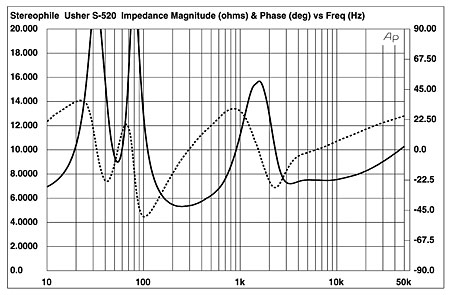
Fig.1 Usher S-520, electrical impedance (solid) and phase (dashed). (2 ohms/vertical div.)
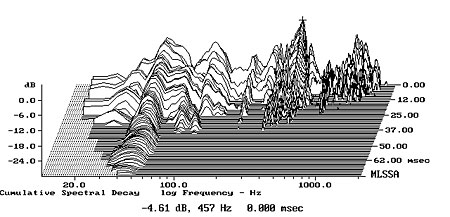
Fig.2 Usher S-520, cumulative spectral-decay plot calculated from the output of an accelerometer fastened to the center of the cabinet's rear panel (MLS driving voltage to speaker, 7.55V; measurement bandwidth, 2kHz).
The saddle centered at 54Hz in the impedance-magnitude trace suggests that this is the tuning frequency of the baffle-mounted reflex port. Looking at the outputs of the woofer and port, measured in the nearfield and shown to the left of fig.3, it appears that the woofer's minimum-motion notch actually occurs slightly lower in frequency, with the port's response peaking between 45 and 65Hz. As is to be expected from the S-520's diminutive dimensions, it offers little in the way of measured low-frequency extension, though I note that Bob Reina liked what there was of the speaker's bass presentation. Higher in frequency, the woofer's response suffers from a discontinuity between 1 and 2kHz, before crossing over to the tweeter at around 2.5kHz. The actual crossover slopes appear to be third-order, 18dB/octave, which usefully suppresses some higher-frequency peaks in the woofer's output. The silk-dome tweeter's on-axis output is shelved-up a little in the mid-treble. (All the acoustic measurements were taken with the grille removed.)
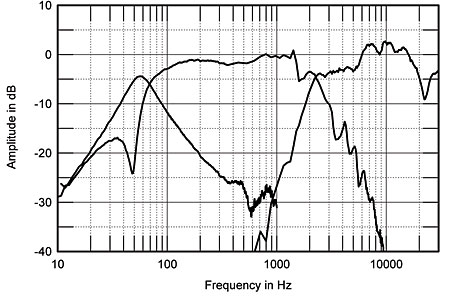
Fig.3 Usher S-520, acoustic crossover on tweeter axis at 50", corrected for microphone response, with the nearfield responses of woofer and port plotted below 300Hz and 1kHz, respectively.
Fig.4 shows that when the S-520's output is averaged across a 30° horizontal angle centered on the tweeter axis, this shelf evens out to give an impressively flat treble for an inexpensive model. There is still a small discontinuity evident at the top of the woofer's passband, which made me wonder about BJR's finding the lower treble a bit "highlighted." Overall, however, the Usher's midrange balance is also very flat. This graph's lack of the upper-bass "bump" that usually results from the nearfield measurement technique suggests that the S-520's low-frequency alignment has been tuned for clarity and articulation rather than boom. I wondered if this behavior was why BJR liked what this speaker did in the bass, though he did mention hearing some warmth.
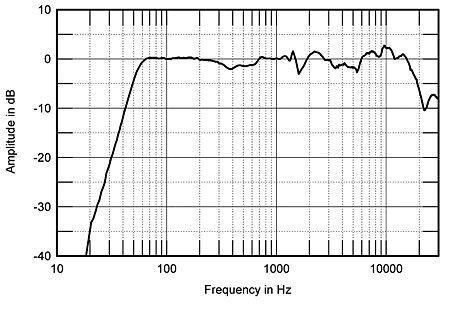
Fig.4 Usher S-520, anechoic response on tweeter axis at 50", averaged across 30° horizontal window and corrected for microphone response, with the complex sum of the nearfield woofer and port responses, taking into account acoustic phase and distance from the nominal farfield point, plotted below 300Hz.
The Usher's lateral-dispersion plot (fig.5, with the off-axis changes on the tweeter side of the baffle shown at the front) reveals that while there is a little bit of flare at the bottom of the tweeter's passband, this actually coincides with a slight lack of energy in the speaker's on-axis output. In a reasonably sized room without too much in the way of bare walls, the S-520's treble will sound evenly balanced. Note also that the dome tweeter gets very directional at the top of its passband, above 10kHz, which is probably why BJR found the top octave a little lacking in "air." In the vertical plane (fig.6), a deep suckout develops in the crossover region more than 10° above and 15° below the tweeter axis. Tall stands will work better than short ones with this speaker.
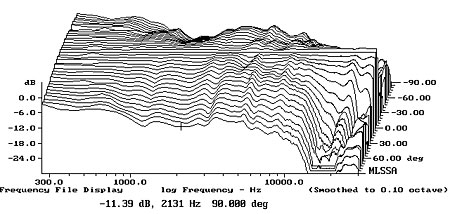
Fig.5 Usher S-520, lateral response family at 50", normalized to response on tweeter axis, from back to front: differences in response 90–5° off axis on port side of baffle, reference response, differences in response 5–90° off axis on tweeter side of baffle.
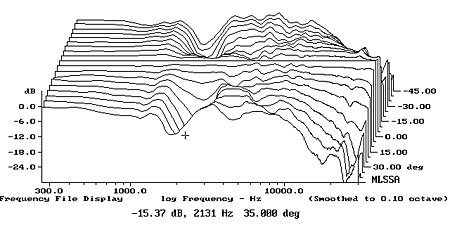
Fig.6 Usher S-520, vertical response family at 50", normalized to response on tweeter axis, from back to front: differences in response 45–5° above axis, reference response, differences in response 5–45° below axis.
In the time domain, the S-520's step response (fig.7) indicates that both tweeter and woofer are connected in positive acoustic polarity, the former slightly leading the latter. The good integration of the two units' steps, however, confirms their good frequency-domain integration, seen in fig.4. The Usher's farfield cumulative spectral-decay plot (fig.8) is impressively clean in the tweeter's range, only slightly marred by some delayed energy associated with the on-axis glitch at the top of the woofer's passband.
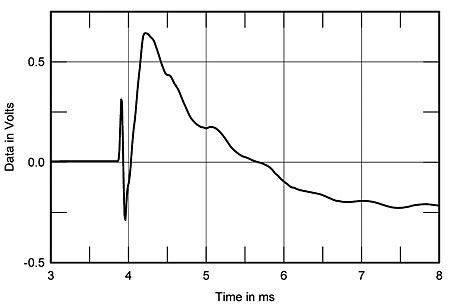
Fig.7 Usher S-520, step response on tweeter axis at 50" (5ms time window, 30kHz bandwidth).
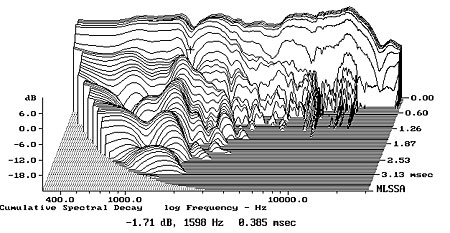
Fig.8 Usher S-520, cumulative spectral-decay plot at 50" (0.15ms risetime).
Overall, the measured performance of Usher Audio Technology's S-520 indicates that some solid audio engineering has gone into its design, which is especially creditable given its bargain-basement price.—John Atkinson
- Log in or register to post comments




































